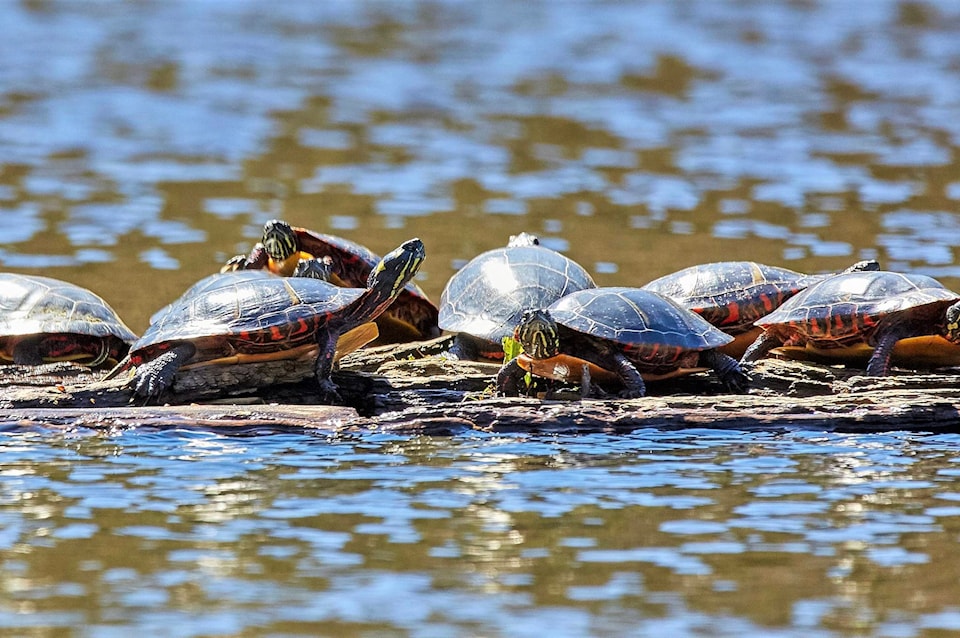With more COVID-19 restrictions lifted and Canadians embarking on summer vacations, wildlife sightings — and collisions with vehicles — are more likely to involve turtles.
The Nature Conservancy of Canada (NCC) is asking motorists to give turtles a brake.
The conservation organization is shining a light on declining turtle populations in Canada due to collisions with vehicles.
Turtle populations are vulnerable to collisions along roads and highways.
In British Columbia, this is a particular problem with the Intermountain – Rocky Mountain population of western painted turtle, notably in the Okanagan region, where the combination of turtle-supporting wetland and high-traffic roads results in many vehicular turtle deaths each year.
Throughout B.C. the western painted turtle is considered a species at risk by the Committee of the Status of Endangered Wildlife in Canada (COSEWIC).
Turtles are not just adorable, they’re an important part of wetland ecosystems.
They help keep wetlands clean and healthy by eating dead plants, insects and animals, and play the role of the wetland janitor.
Motorists will sometimes encounter turtles on busy roads in major centres and on backroads.
Turtles spend most of their lives in a small area. Between May and October, they sometimes wander as far as 10 kilometres. Like other reptiles, turtles are cold-blooded, so basking on gravel, sandy roadsides or warm asphalt feels good on cooler days. Adult turtles set out to mate in spring and find nesting sites. In late summer and early fall, newly hatched turtles can be seen traveling from where they hatched to a nearby wetland or body of water.
While a turtle’s shell can protect them from predators, it’s no match for a car. When a turtle is struck by a car, it can have a bigger impact than just the loss of that one turtle. Turtles can take up to 25 years before reproducing, and their egg survival rate is very low. Approximately only two eggs out of 100 become adult turtles. A loss of one adult turtle is the loss of 20 years of development. To maintain their numbers within a population, turtles count on the survival of the adults, especially the females. Studies show that just a five per cent increase in annual mortality can put an entire population at risk of decline.
The Nature Conservancy of Canada (NCC) encourages motorists to slow down when they see a turtle on the road and check to be sure they can safely steer around it.
Kristyn Ferguson, NCC program director.
